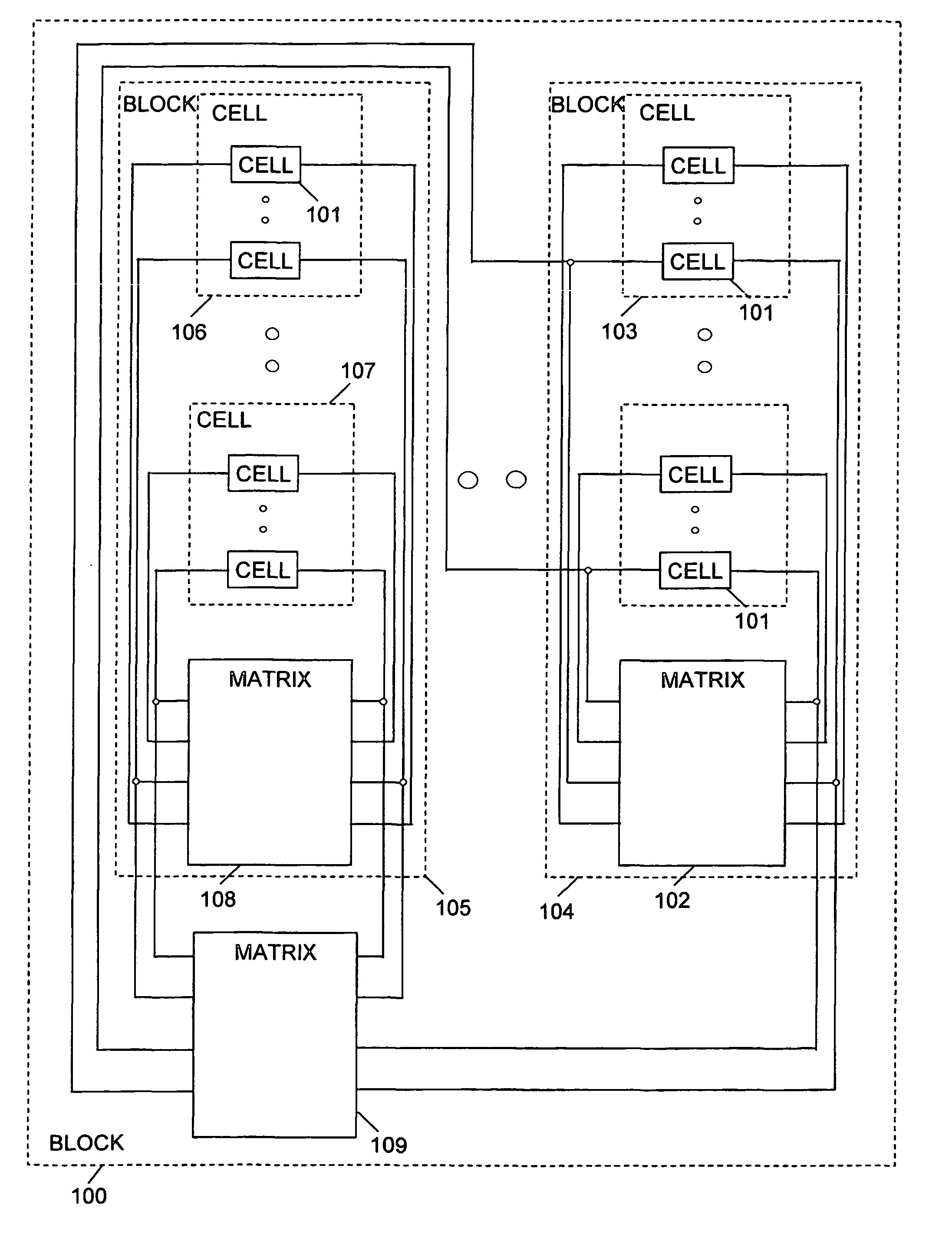Universal hardware device and method and tools for use therewith
a hardware device and universal technology, applied in the field of circuit design and testing and device architecture, can solve the problems of long development cycle, high cost, long time required to market integrated circuits, etc., and achieve the effect of facilitating design and simulation of devices and reducing the time from design to marketing
- Summary
- Abstract
- Description
- Claims
- Application Information
AI Technical Summary
Benefits of technology
Problems solved by technology
Method used
Image
Examples
example 1
Counter
[0138]FIG. 10 shows schematically a counter 160 using one cell 110 comprising a RAM 111 having an n-bit data output bus 113 fed to an n-input latch 114, whose output 115, constituting the cell's output, is connected to the input of the matrix 155. Each of the cell's n output lines is connected via the matrix 155 to a respective address line of the RAM's address bus 112. The RAM is loaded with the following data:
[0139]
AddressData011223...K-1KK0
[0140]In steady state, there is a “number” at the output 115 of the latch 114 that defines the “address” of the RAM 111. Therefore, the “data” of the RAM—the input of the latch—is set by the table. For all addresses apart from the last, the data in any addressable location of the RAM is equal to one more than the address thereof and this becomes the new address on the next clock pulse. Thus, each time the RAM is clocked, the latch 114 latches the address of the next addressable location whose data is equal to the current data plus 1. Aft...
example 2
Up-Down Counter
[0141]FIG. 11 shows schematically an Up-Down counter 165 substantially identical to the counter shown in FIG. 10, except that the RAM 111 is constructed to store two tables in respective addressable locations thereof. This, of course, requires that the RAM be twice as large as that used in the counter of FIG. 10, or that the range of the counter be half. In either case, one bit of the address is used to set a new area in the RAM for storing data that, when fed to the remaining bits of the address bus, will point to a new address the value of whose data is one less than the address. The new area in the RAM is loaded with the following data:
[0142]
AddressData0K102132...K-1K-2KK-1
[0143]The Up / Down signal is also routed from the matrix 155, as are all the inputs of the cells.
example 3
[0144]In order to achieve delay, the RAM is redundant. Therefore, the RAM 111 can be coded simply to transfer the address to the data e.g. at address “0” the data is “0”, at address “1” the data is “1” and so on. On each clock signal, the data at the input of the cell is latched and routed out directly via the RAM, a delay of one clock is achieved. The connectivity of such a delay is also used in the Shift Register described below in Example 4 and shown in FIG. 13.
PUM
 Login to View More
Login to View More Abstract
Description
Claims
Application Information
 Login to View More
Login to View More - R&D
- Intellectual Property
- Life Sciences
- Materials
- Tech Scout
- Unparalleled Data Quality
- Higher Quality Content
- 60% Fewer Hallucinations
Browse by: Latest US Patents, China's latest patents, Technical Efficacy Thesaurus, Application Domain, Technology Topic, Popular Technical Reports.
© 2025 PatSnap. All rights reserved.Legal|Privacy policy|Modern Slavery Act Transparency Statement|Sitemap|About US| Contact US: help@patsnap.com



